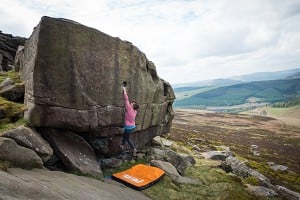
The Llanberis Pass is a tremendous destination, a place so steeped in climbing tradition and mythology that it has become a cornerstone of Welsh climbing folklore, and for many climbers is one of the first BIG destinations to be visited away from their local venues.
'The Pass' as it is affectionately known is a glaciated valley lined on both sides by world class traditional climbing. Just driving down the winding mountain road with its cliffs towering on either side makes you feel like you are following in the foot steps of the giants of the climbing world.
A mere stones throw from Llanberis, the capital of North Wales climbing, The Pass has seen generations of climbers leave their mark, last great problems being tamed and subsequently conquered by the masses, as yesteryears test-piece transforms into a modern day classic rock route. It is without a doubt one of THE venues that a modern day traditional climber should have on there to-go-to list and is so extensive and well developed that it will offer a careers worth of climbing entertainment to even the most regular of visitors.
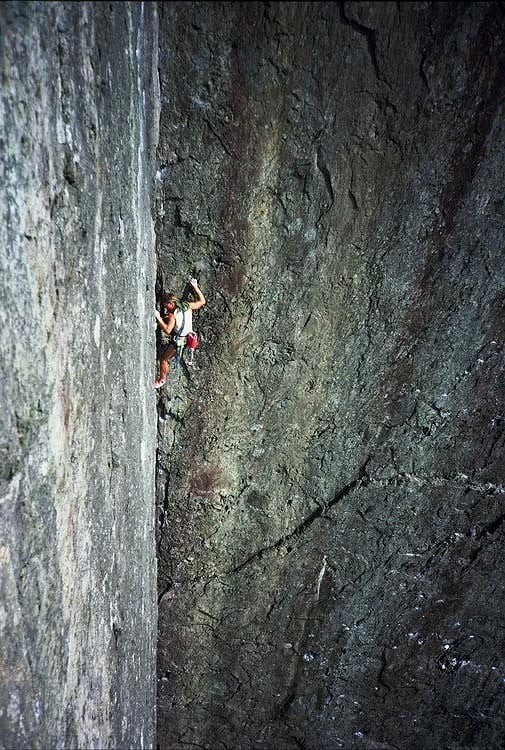
The Crags
The pass has literally hundreds of facets, and in this feature I have attempted to share with you the most historic and pleasurable climbs. It is easiest to address the area crag by crag, rather than climb by climb, the geology of the area dictating that each crag has its own distinct feel, and atmosphere. Starting at the first crag on the south facing side of the pass Craig Ddu I will describe the cliffs clockwise working up the valley and back down the north facing side back towards the village of Nant Peris.
Craig Ddu (The Black Crag)
Often, if not always damp to some extent, the lefthand section of this cliff is probably best avoided in all but a drought. The starter route of the crag is Rib and Slab (VD) (VD), which takes the obvious features of the routes name, it does exactly what it says on the tin. Be warned though, the descent is terrifying, the convex slope being akin to walking down an orange skin. The Yellow routes are also worth a look, both the Yellow Groove (VS 4b) (VS) and Yellow Wall (E2 5b) (E2) are good outings when in condition. If you survive the descent then the micro route of mabinogion (E2 5c) (E2) is well worth climbing whilst passing by, the glacial smooth rock is unlike the main crag, with pockets and ripples leading the way, and with the bonus of expansive views up The Pass.
Clogwyn y Grochan (Cauldron Cliff, aka The Grochan)
As the most roadside of The Pass crags the Grochan gets more than its fair share of attention. On a good summers evening legions of locals and visitors alike can be seen chasing the setting sun up the wall. If you climb VS or above then this crag will almost certainly have a route that will knock your socks off. It would be possible to do a destination article on this crag alone so varied is the climbing, in general safe but physically demanding. The easiest route is Nea (VS 4b) (VS), and along with Phantom Rib (VS 4c) (VS) give excellent value for the grade. The jump to the next level is a brutal one on this crag as demonstrated on Spectre (HVS 5a) (HVS), its sustained finger crack on pitch two and short lived off-width section above sorting the men from the boys, or the girls from the women as they say. Similarly Brant Direct (HVS 5a) (HVS) has some sort of urgency about it on first acquaintance, remember though as steep and demanding as it is you can stand bridged out resting those arms for an age.
Other Great Grochan Classic routes:
Sickle (HVS 5b) HVS A delicate traverse below the headwall of SS Special.
Slape Direct (E2 5c) E1 A one move wonder, but what a move, possibly the most fallen off route in pass, after Left Wall.
Hangover (E1 5b) E1 Steep and awkward climbing up a discontinuous groove, leads to victory.
Spectrum (E2 5c) E2 The second pitch has it all, technical steep slab and a burly overhanging wall with just enough gear to make it reasonably safe.
S S Special (E2 5c) E2 A great single pitch, difficult moves guard the upper wall.
Stroll On (E3 6a) E3 This is no pushover, unrelenting, sustained climbing leads to the belay.
Cockblock (E5 6b) E5 Hard, technical, bold and burly. A really leveler, not many climber get the onsight.
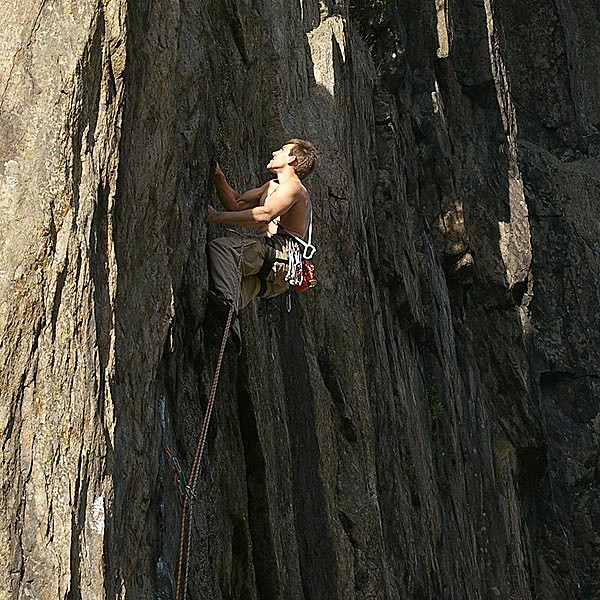
Carreg Wastad (Flat Crag, aka The Wastad)
A fine and sunny crag, and another stepping stone for people working their way through the crags. A highlight for the VDiff leader is The Wrinkle (VD), an aptly named route that ascends glorious hexagonal rock columns on its top pitch, one of the geological marvels of The Pass. Crackstone Rib (S 4a) (Severe) will make you feel the air under your feet as you traverse out to the rib and climb it on ample but polished holds, a real skywalker of a pitch. Shadow Wall (VS 4c) offers a good introduction to the VS grade, and a chance to practice you manteling skills, as you ledge shuffle your way below the intimidating roof prior to sneaking around its righthand side. Overlapping Wall (E1 5b) and Elidor (E1 5b) offer the E1 leader a challenge, often run out, but only where the climbing is easy although balancy. For those wanting something steeper then the roof crack of Brute 33 (E3 6a) (E3) will wake up those arms, as well as confound those without the guns for the job.
Dinas Cromlech (Fortress of the Cromlech)
THE crag of the The Pass, its position high on the south facing side of the valley has made it a veritable crucible of climbing over the years, the main lines of Cenotaph Corner (E1 5c) (E1) and Cemetery Gates (E1 5b) (E1) named after bus routes in Manchester, were ascended by the godfather of modern climbing Joe Brown. Joe reportedly screamed for slack whilst on the top crux section, whilst holding a peg hammer in his hand, and then watched as the hammer dropped rapidly down the corner. Stuck as whether to warn his belayer and see him take the hammer in the face or remain silent and have him take the blow to the crown of his head he choose the latter, and had to return another day finish the ascent, after he knock the belayer unconscious.
The left and right walls have also seen periodic developments to keep the crag up-to-date, the routes taking their rather dull names from there positioning. Believe me though, there is nothing dull about Left Wall (E2 5c) (E2) or Right Wall (E5 6a) (E5).
Perhaps my favourite route for its name is Flying Buttress (VD) (VD), first named Sodom by Menlove Edwards, its connotations deemed too risqu for the CC guidebook committee. Another classic lower grade route is Spiral Stairs (VD), which threads a devious route through intimidating terrain.
For intermediate climbers Dives/Better Things (HS 4b) (HS) and Noah's Warning (VS 5a) (VS) are a couple more of the spectacular mid-grade classics that dominate this valley. It was for this reason that the climbers of old dubbed the place the "valley of the tigers", as it needs a fierce disposition to tackle these route compared to the slabs of the Ogwen Valley.
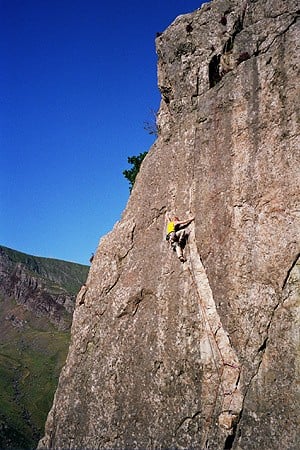
Dinas Mot (Mot's Fortress aka The Mot)
Dinas Mot is slabbier than many of its counterparts in the valley, and is the reason that the crag was one of the first to be developed by the early pioneer Colin Kirkus. I don't think there is a route not worth doing on its famous nose-like feature, the rock is often immaculate, and the climbing superb. The routes follow a theme, easier bold and technical early pitches, with steep and uncompromising finales. That said the wings of the Mot are just as lavishly decorated with amazing rock.
The Left Wing, which sees very little sunlight, has two big routes on it MPP (HVS 5a) (HVS) and Gollum (HVS 5b) (HVS). Gollum in particular has a roof that will curl most HVS leaders toes, at over a body length it look ridiculous, but like a Stanage's Flying Buttress Direct, it passes with relative ease, although the setting is somewhat more spectacular.
The Right Wing extends across several buttresses, and is another fine way to enjoy the varied geology of the area, routes like Black Shadow (E3 5c) (E3) and Black Spring (HVS 5a) (HVS) pass from one rock type to another, the top layer being a high friction grit-esque rock. Further right the Plexus Buttress means that you can savour only this grit style of climbing. Whilst the classics of Nexus (E1 5b) (E1) and Plexus (E1 5b) (E1) are amazing outings of their grade, giving some of the best climbing in the pass. No route is more under-rated than Ten Degrees North (E2 5c) (E2), a simply joyful climbing problem. On first acquaintance I had miss-read the guide and climbed it thinking it was one of the ...xus's. So when I ended up body bridging across a groove looking directly down at my trusted belayer, we both laughed as I shouted down "I've gone on holiday by mistake, This ain't E1!". It is one of my favorite E2's in Wales, if not the world.
Cyrn Las (Gyrn Las) (The Grey Horn)
This is the crag for mountaineers and is a fairly serious place. Over the years numerous accidents have occurred because of loose rock and poor route finding skills on the easiest and most climbed line of Main Wall (HS 4b) (HS), which zigzags its way up the cliff, to arrive at a final slabby arte where the air snaps at your ankles and the exposure threatens to overwhelm you. This crag however has other gems, The Grooves (E1 5b) (E1), Lubyanka (E3 5c) (E3) and The Skull (E4 6a) (E4) are the most celebrated, none of which are pushovers for the grade. The Skull has even bitten back, Dave Musgrove having his fingers on one hand cut off by a loose block.
Craig Cwm Glas Bach Area
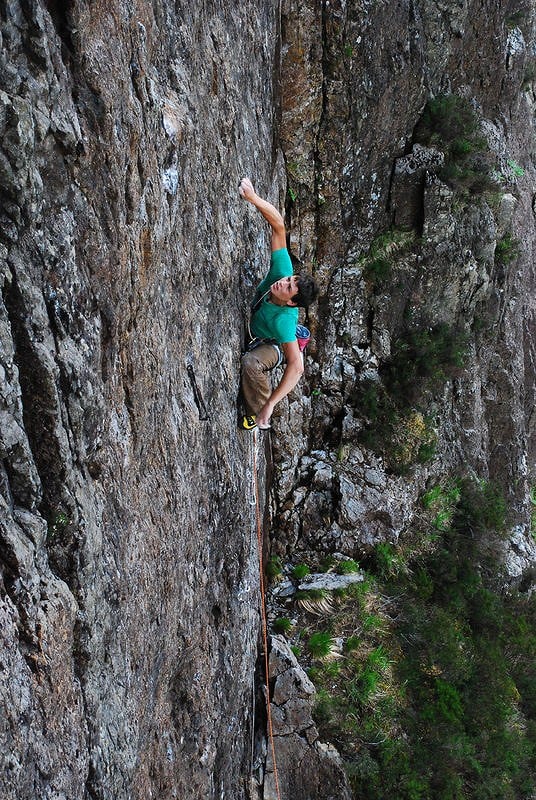
More of a collection of smaller crags Cwm Glas is dotted, with some excellent hard routes. Pretty Girls Make Graves (E6 6b) (E6) is something of a test-piece for the modern wad, a bouldery crux leads to a pumpy crack, with the test being whether you can first gain the crack, and if you succeed, can you make it to the top before your arms give out. Below that grade on the well concealed Hidden Wall is Rimsky Korsakov (E5 6a) (E5) another great route that has been downgraded in the latest guide to E4, although as the author of this I am reinstating its former grade albeit soft, as decision by committee is questionable at the best of times. Another example of this is Weasels Rip My Flesh (E4 6a) (E4) again wrongly graded IMHO in the latest guide. If your going well on slate then it feels fine for E3 but is still a pokey bit of off vertical bold face climbing.
The Best of the Bouldering
If the crags and routes are varied in the pass, then so is the bouldering. The different types of rock really add to the experience. For most people, bouldering in The Pass will mean the Cromlech Boulders which is where the locals with beanies and tooth brushes hang out after work. The Cromlech boulders, whilst being amazing are far from the best boulders in The Pass for bouldering. So for starters check out the boulders and problems listed below.
Other outlying classic bouldering venues are:
The Grooves Boulder, Utopia, Wavelength
The Meadow and the The Pac Man Boulders.
Fear of a Slopey Planet (V6) (V5), Boysen's groove (V4) (V4), Utopia Lefthand (V5), Utopia Traverse (V6) (V6), The Groove (f6A) wavelength (V4), King of Drunks (V6) (V6), Killer Weed (f7A) (V4), No match for climb id:"Cwms the Deviant" (V0), Lordy, Lordy (V5) (V5), Lord Hunt's Jig (f6B) (V2), Karma Sutra (V5) (V5) and Pac Man Arete (V5) (V4). Oh and I should of course mention Jerry's Roof (f7C)(V9).
The History
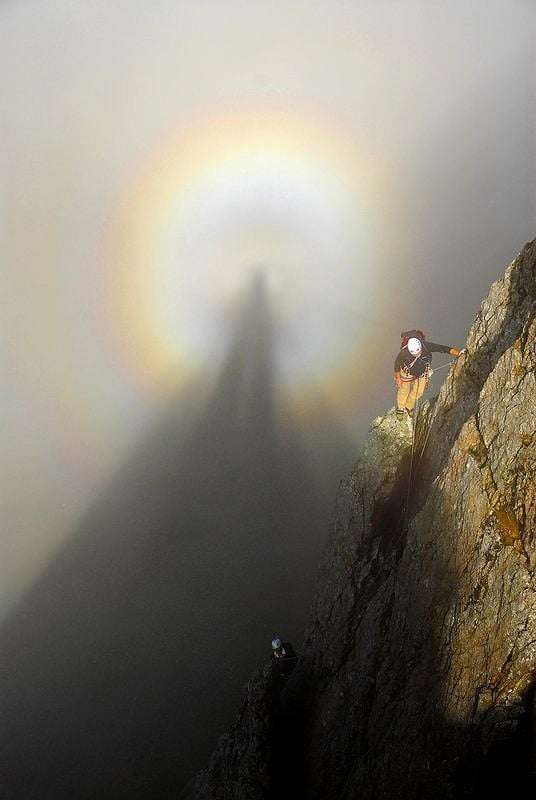
Prior to the 20th century the main thrust of exploration was on the major ridges and gullys such as the outstanding Crib Goch - Crib Y Ddysgl Traverse (Summer) (Grade-1) and The Parsons Nose (10) , more in the scrambling vein than actual rock climbing but still big ticks for those with a mountaineering bent. Rock climbing at this point in time was very much the pursuit of the Victorian gentry, two standout routes from this period being Reade's Route (Summer) (S) (1908) and Gambit Climb (S) (1910), definitely involving climbing but still very much in the high mountain crag vein leading to a summit.
Little of significance happened in The Pass until after World War 1, and the development of more cragging style routes on Dinas Mot. Firstly The Cracks (HS 4c) , a classic HS and then a piece of climbing that is celebrated to this very day - Kirkus' Direct Route (VS 5b) (1930). This line perhaps paved the way for the exploration of the myriad of cliffs that line the valley's sides. Along with Colin Kirkus, John Menlove Edwards also attacked the walls of The Pass with vigour and between them they plucked the plum lines of the inter-war years. Many of these routes were only made possible by the use of pegs for runners and belays, something that sparked ethical debates at the time and ever since although today The Pass is peg free. Menlove survived the Second World War, but British climbing lost one of its leading light in Kirkus, when he was shot down over Bremen during a bombing raid. After the War it is arguable that the gentry were finally ousted from there lofty perch in our sport, as the common man became a part of the development. The war years had revolutionised equipment design and a series of technical developments lead to the constant increase in difficulty of climbs in subsequent generations. The subsequent generations include virtually all the big hitters of British climbing and The Pass's modern history is written on the walls of its cliffs. As a friend put it, 'Every time I walk up to the Cromlech, I imagine how many and whose hands have held those holds, and felt the same exposure pulling them down'. That's the thing with The Pass there is something for everyone and it is all a piece of our climbing history, heritage and legend.
Logistics
When to Go
Whilst bits of the pass can dry quickly, and the boulderers might choose the middle of winter for friction. The best time to enjoy the pass in on sunny days. Craig Ddu, The Grochan, The Wastad and The Cromlech are sun traps, however on the few days of the year when the sun is too hot the north face slopes offer cool options. Many locals climb in the spring and autumn just as the clocks change, as the extended daylight allows after work climbing, especially on The Grochan.
How to Get There
From the south - follow the A5 from Birmingham to Capel Curig, and turn left. Drive for 4.5 miles until at a pub on the right (Pen y Gwryd). Turn right to Llanberis, this road leads to Pen y Pass, as you reach the crest of the hill you are met with one of the finest views of The Pass, as a whole world of pain, terror and enjoyment is laid out before you. From the north - follow the A55 coast road to Bangor and then turn off the expressway at the first sign for Bangor. Llanberis is signposted from here. Parking in the Llanberis Pass is becoming more and more problematic, as many people bound for the summit of Snowdon will fill the available roadside parking by 9am most mornings in the summer season. If the parking in the pass is full, either park in Nant Peris and walk, or Llanberis and use the Sherpa Bus (about 3 per person, plus daily car parking fee), and get off the bus at the Cromlech Boulders, a very central location for all the crags.
Accommodation Advertise here
No Premier Listings found in this area
The hardcore will camp by the Cromlech Boulders, this is not really wild camping, and isn't necessary, or legal. Down the road is an excellent but basic campsite opposite the Vaynol Arms, an OK pub and a favourite with many locals. It costs around 4.50 a night (per person), and has hot and cold showers (according to their sign!) and toilets. There are several climbing club huts in the valley the Climbers' Club, Ceunant and Vagabonds all have great huts. As you leave Nant Peris towards Llanberis Ben's Bunkhouse is situated above the large lay-by on the left. This is only 6 minutes walk from the Vaynol, and very well appointed for a bunkhouse has a campsite and a host of B&B's, Hotels, Youth Hostel, and Bunkhouses most are climber and walker friendly, however I should give special mention to Pete's Eats Bunkhouse and the Gally y Glyn Hotel (home of Pizza and a Pint), two places that have become popular with the locals over the years. As I write this the infamous climbers pub The Heights Hotel has closed down.
Food and Supplies
There are two shops in Llanberis, Spar and Costcutter, both stock a reasonable but slightly overpriced selection of food. If you need some specialist food then supermarkets are available in Bangor and Caernarfon. The Vaynol Arms in Nant Peris is the nearest good pub with food to The Pass. Llanberis has several pubs, I have recently been drinking in all of them, and each has its unique charm, although I am not sure what that is in a few of them. The Gwynedd has nice food and beer, The Dolbadarn is fairly basic, the Padarn Lake is often vibrant at the weekend with local youths, The Prince of Wales is my local and is where many of the older villagers drink, it hasn't seen much in the way of decoration recently, is basic but I love it. Wednesday and Thursday nights is definitely Gallt Y Glyn Night Pizza and Pint. If your on holiday to party hard as well as climb hard then The Fricsan is often a good venue, with live bands or dance nights at weekends.
Gear
There are gear shops in Llanberis. There are a few guidebooks including North Wales Climbs by Rockfax.
Outdoor Shops Advertise here
Instructor/Guides Advertise here
No Premier Listings found in this area
Other Activities
What else do you need, the climbing should be enough, if it isn't then walking and scrambling abounds in the Snowdonia National Park, as does some amazing mountain biking. Other attractions are the Electric Mountain Underground Tour, The Slate Museum (free entry) and The Ropes and Ladders High Ropes Course.
Climbing Walls Advertise here
No Premier Listings found in this area
Mark Reeves is a photographer, climbing instructor, writer and film maker. He is also a member of the Llanberis mountain rescue team. If you hurt yourself on a crag in the Llanberis pass, he may well be coming to your aid.
You can read more about Mark Reeves on his blog: Life in the Vertical
Mark is also a professional Mountaineering Instructor. You can find out more on his other site:
- PRESS RELEASE: 30-Week Instructor Training 2020/21 19 Jun, 2020
- Sunnier Climbs - Hot Rock holidays 25 Jun, 2019
- ARTICLE: Avalanche Basics Part 2: Staying Safe 20 Mar, 2019
- SKILLS: Avalanche Basics Part 1: Anatomy of an Avalanche 15 Mar, 2019
- ARTICLE: Sea Cliff Climbing Safety 10 May, 2017
- New North Wales Rock Climbing iPhone Guide 30 Nov, 2011
- DESTINATION GUIDE: Llanberis Slate - The Full Tour 30 May, 2011
- Llanberis Mountain Film Festival 22 Mar, 2011
- DESTINATION GUIDE: Tremadog - North Wales 26 Oct, 2010
- Bardsey Ripple Sundae 7 Dec, 2009

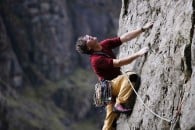

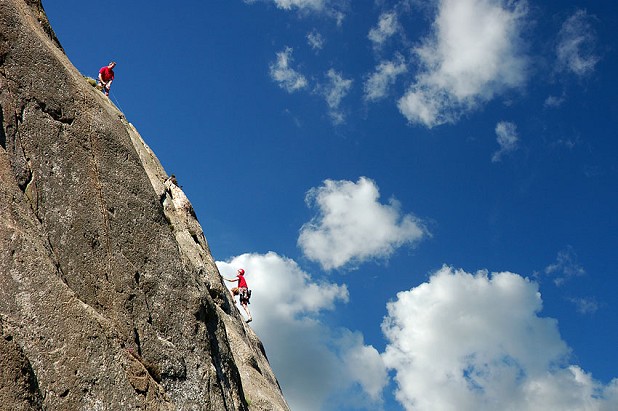
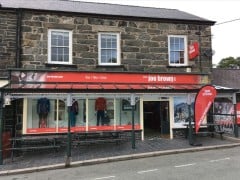

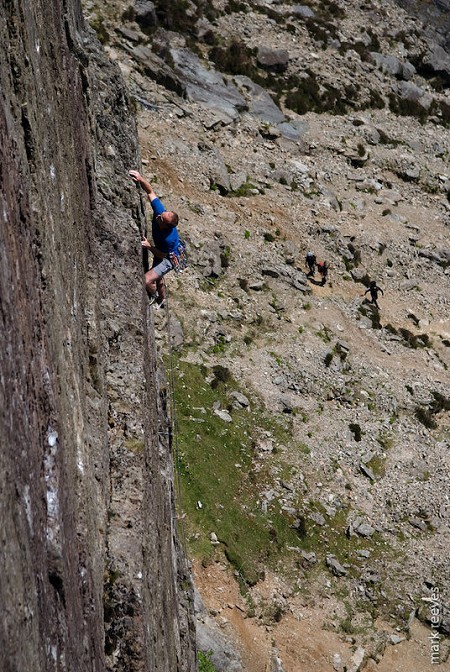
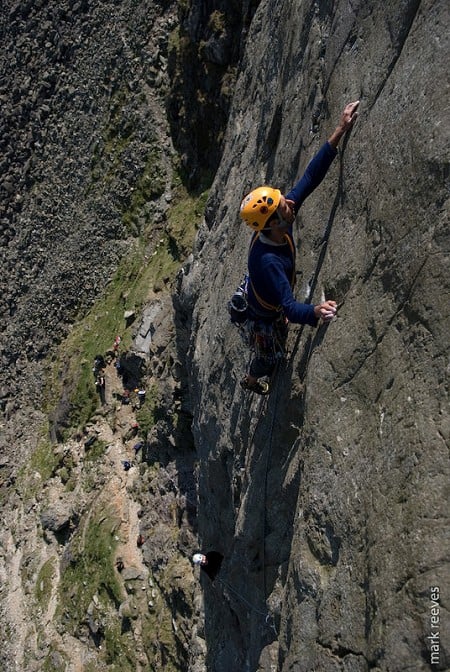
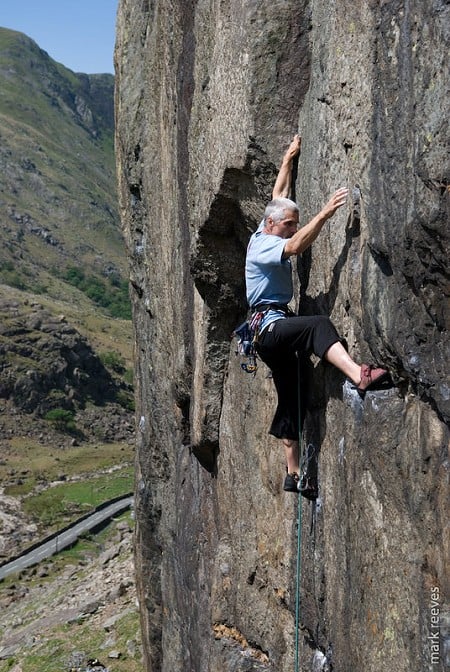


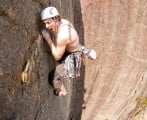






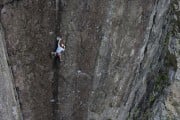


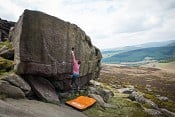

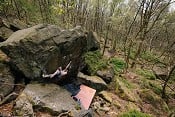
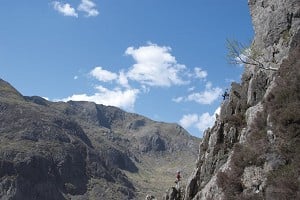




Comments